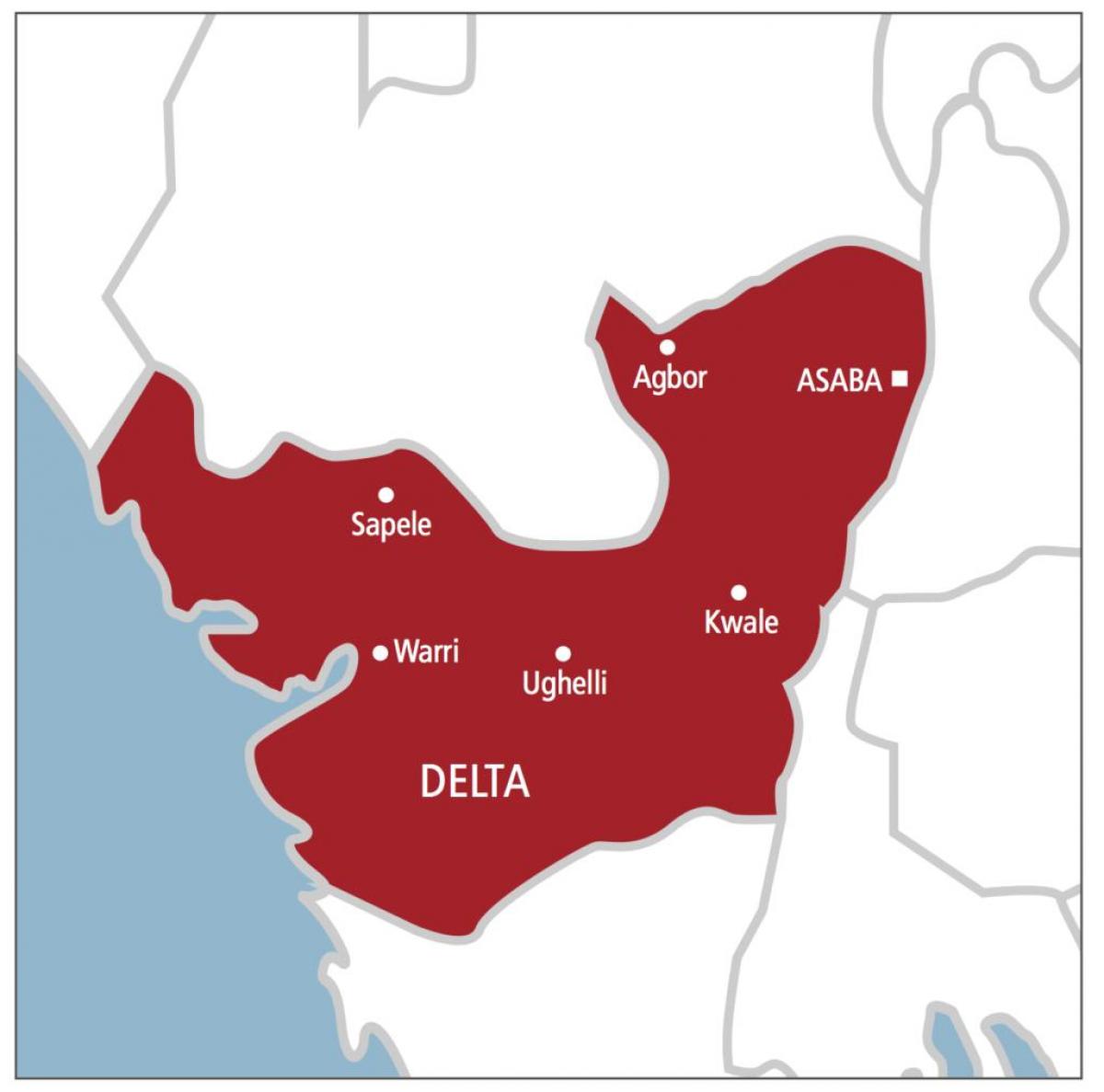Osun was one of the states in the country usually ravaged by flood before the advent of the present administration. As other states are grappling with the lost that comes with flooding due to downpour, SOLOMON ODENIYI takes a look at past experience of residents and how the state has fared on the issue of flooding
For quite a number of years now, the world has witnessed monumental socio-economic losses arising from weather and climate-related disasters, which has been most largely attributed to non-climate friendly human activities and developmental practices.
Of the climate related disasters, flooding is being said to be capable of incurring widespread devastation as it has been reported to have claimed millions of lives in the last hundred years, more than any other weather phenomenon. This is despite the important role water plays in the lives of habitat on earth.
Averting flooding in the states of the federation has become one of the major tasks of government across all tiers. The federal government is reported to have release fund to governors to curtail this yearly. It released an equivalent of $8.3 million.
Also, to significantly reduce this harmful effect on environment and living things in the country, every year, the Nigerian Meteorological Agency (NiMet) produces the Seasonal Rainfall Prediction (SRP), and working together with the Nigeria Hydrological Agency (NHSA) to ensure that accurate flood information is made available to the public to minimise impacts of flood in the country.
NHSA in its 2018 flood outlooks in 35 states in the country stated that Sokoto, Niger, Benue, Anambra, Niger Delta, Anambra, Ogun-Osun, Cross-River and Yobe states would have high risks of river flooding. It also indicated that Lagos, Bayelsa, Rivers, Delta, Ondo states may likely experience coastal flooding.
It attributed this to a likely rise in the sea level and tidal surge, which would impact fishing and coastal transportation.
The outlook, which is a yearly projection by the agency, further indicated that flash and urban flood were expected to occur in Port Harcourt, Sokoto, Lagos, Ibadan, Kaduna, Yola, Abuja, Maiduguri, Makurdi, Calabar, Jos, Owerri, Osogbo and Ilorin.
Others are Awka, Abakaliki, Birnin-Kebbi, Kano, Yenagoa, Abeokuta, Ado-Ekiti, Lokoja, Lafia, Nsuka and Gombe. Also included are Suleja, Karu, Nyanya, Abaji, Onitsha, Sapele, Hadejia and other major cities with poor drainage.
While Nimet had predicted that many parts of the country were likely to experience flooding due to a shift in rainfall pattern caused by climate change, it added that distortions had occurred in the pattern of rainfall leading to variation in the amount of rain that was expected in the country.
Despite the prediction of heavy rainfall and the warnings given to states, the rains that had been witnessed have brought sorrow, pains and losses for victims where floods have ravaged in the predicted 35 states of the federation.
The National Emergency Management Agency (NEMA) last month, declared Kogi, Niger, Anambra and Delta states as national disaster states. Last week, it further declared national disaster in another five states summing the states with national disaster to 9. The added states are: Adamawa, Taraba, Rivers, Kebbi, and Bayelsa. This was as a result of the devastating flood that ravaged the states where lives and properties have been lost.
A report released by the National Emergency Management Agency (NEMA) showed that as at October 9, 2018, a total of 103 Local Government Areas (LGAs) across 10 states in the country, were impacted by severe flooding with an estimated 1.9 million people affected.
It stated that 561,442 people have been internally displaced while 351,236 are in need of immediate humanitarian assistance, adding that the death toll stands at 199 people since late August with 1,306 injuries reported.
HGowever, save for Ifedapo in Ofatedo and the flood case recorded at Ile-Ife recently as a result of blockage of waterways owing to refuse dumping and construction of buildings, Osun could have been said to be totally free from flood and subsequent havoc that accompanies downpours, as there used to be persistent flooding in the state during rainy seasons, with instances of loss of life and houses being submerged before the administration of Ogbeni Rauf Aregbesola.
For instance, Gbonmi area in the state capital was said to be a flash point of flood. Gbonmi, a Yoruba language literally means to “scoop water”. It was told of how the past governor, Prince Olagunsoye Oyinlola had joked that residents of the area be prepared to scoop more water or flee from the area as they met the water there. Anytime it rained in the area, roads were flooded, houses submerged, drainages overflowed and vehicles swept off , several lives were lost, with goods and property worth millions of Naira destroyed in the flooding that resulted from the downpour then.
A trader in the area who gave her name as Iya Toheeb said though, she has just moved to the area but heard of how the area was prone to flooding anytime it rained years back.
She said, “I just secured a shop here in January this year but that doesn’t mean I have not been told the history of this place. I heard how anytime it rained, people flee from their houses and shops. I heard how goods worth millions of naira were swept away by flood. Most painful was the death of a man whose wife works with the ministry of works. “
Asked if she was scared when Osun state was projected amongst states that would experience flooding this year , she said, “To be sincere, I had no fear, if I had I wouldn’t have rented a shop here. “Then, the problem was that there were no good drainages, but now I can see that the government has built several in many areas and seen to the issues of indiscriminate dumping of refuse which to my own knowledge leads to flood”.
A former resident of Gbonmi who now resides at Asubiaro , Mr Abiodun Taiwo recalled how he was held at a spot until late night after flood had submerged the road to his house when the water level was down
“I can’t really recall the exact year, I was left stranded at Fiwasaye area. On that day, the flood submerged the bridge, blocking the means of getting home. It wasn’t funny, as myself and others were at the spot until late in the night when the water level went down. We got in the flood to get home that night while we could not distinguished our left from right. I left the area after another flood submerged my rented apartment. I remember sleeping outside for over a month. That incident put fear in my mind, but I am thankful to God, I ‘m still alive, some met their deaths as a result”.
Asked if he would be willing to go back to the area if asked to, he said, “Sure I will. Flooding in the area has been a thing of the past. Residents can now sleep and have no cause to panic anytime it rains. The government of the day has my kudos for that”.
Another area in the state capital where rains also used to bring pains and discomfort to the residents was Rasco area.
According to Jamiu Adeoye, people around Rasco area of Oke-fia will not forget the 2009, 2010 and 2015 incidences, adding that the floods which was caused by heavy rainfall, wrecked havoc on the area that residents are yet fully recover from.
He said, ”The Rasco area of Oke-fia is an area in Osogbo which has always been prone to flooding over the years, but the experience of 2009, 2010 and 2015 would never be forgotten by residents. Many have not fully recovered from it. Buildings were submerged; precious lives were lost, while properties worth millions of naira were also washed away by the devastating flood of those years”.
What The Government Did
Osun had witnessed the devastating flooding experience before the advent of Ogbeni Aregbesola’s administration. Coming on board, he displayed relentless effort to have it nipped in the bud and this he started during his early days in office and he has continuously done so in order to ensure the state is rid of the pangs that comes with flooding.
One of the things he did was embarking on dredging of streams and rivers across the state. One of such rivers was Rasco. The river was dredged to clear the debris preventing the free flow of water. Subsequently a reinforced retainer and concrete chanelisation of about 12meters wide and 2.5meters high was made to have a smooth control and flow of the river. This was to control the huge volume of water, as well guide against a situation where the flood overflows to the road.
Other rivers and streams in other parts of the state have not been left untouched annually. Rivers such as the Okookoo and Ogbagba streams in Osogbo; streams and rivers in other towns such as Ikire, Ikirun, Iwo, Ile-Ife, Ode-Omu, Ilesa and other towns in the state are also not left out.
Also the waterways being worked on annually by the current administration include; Esimirin, Agbara, Opa, Gbalefefe, Ogboku, Osun streams in Ile-Ife and Modakeke-Ife axis.
Others are the Opopo, Ogbun, Amino, Akeri in Ila-Orangun. In Ilesa axis there is the Omiru, Olutokun and the Adeti streams. The Mogimogi and Aiba rivers in Apomu and Iwo respectively are also not left out.
Also, it was discovered that the cause of flood in most of the affected areas were because the original path for the water had become too narrow to contain the water which volume has risen over the years. The government has started demolishing buildings and shops built on waterways and those that were very close to the river.
The government came up with a strict rule of making building within a flood prone area a crime. Also, the total disregard for the environmental laws that was the case in some parts of the state was discouraged.
The government has been continously desilting drainages in major towns to prevent flooding annually.
With the reality of climate change, it is no longer in contention in the country that the newly elected governor of Osun has a responsibility to make sure the state gives the deserved attention to fight against flooding because of the many rivers and streams that it has. It will not be out of place for him to always priortise dredging waterways among other things to free the state from flood.











